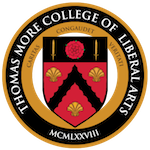Bernard Severin Ingemann’s beloved Danish hymn ‘Igjemem Nat og Traengsel,” written in 1825, was published twenty-four years later in the Nyt Tillig til Evangelisk-Christelig Psalmebog and did not appear in English for yet another eight years. The translator, Sabine Baring-Gould, was prolific even for an English vicar. Born in 1834 when the Seminoles were evicted from Florida, and dying in 1924 one month before Ira Gershwin’s brother George first performed his “Rhapsody in Blue” with the Paul Whiteman Orchestra, his long life produced dozens of books including the fifteen volume Lives of the Saints and a Book of Werewolves which he completed in the same year that be wrote “Onward Christian Soldiers” for a children’s festival at Horbury Bridge.
Baring-Gould’s English version of “Igjemem Nat og Traengsel” sings: “Brother clasps the hand of brother / Stepping fearless through the night.” Spiritual brotherhood draws its imagery from biological brotherhood which, by definition, is coincidental and supplies an inexhaustible lode of secondary coincidences. Just consider, for example, how St. Paul was dismissed by the Roman proconsul of Achaia, Junius Annaeus Gallio (alias Marcus Annaeus Novatus), a biological brother of the Stoic philosopher Lucius Annaeus Seneca, whose signature name is the same as the Iroquoian tribe inhabiting North America like the Seminoles, but farther north (cf. Acts 18: 12-17).
Philosophically, Seneca was a remote and more refined precursor of Jeremy Bentham. This utilitarian’s brother, Sir Samuel, was a colonel in the Russian naval service. Samuel’s tenure as supervisor of the shipyard in Kritchev coincided with the years John Paul Jones spent with the Russian navy on the Black Sea from 1788 to 1790. Jones’s flagship, the “Bonhomme Richard,” was named in tribute to Benjamin Franklin. Ben’s name is almost as inseparable from the City of Brotherly Love as is William Penn, whose portrait in the great hall of Christ Church in Oxford bespeaks a most glorious irony: The future Quaker is the only one in that vast gallery depicted in armour. He was a son of Admiral Sir William Penn, whose naval victory over the Dutch at Lowestoft, coincidentally, was won on the sixteenth-hundredth anniversary of the death of Seneca.
Anyone who flies kites, or encourages others to do so, knows that the founder of the Boy Scouts, Lord Baden-Powell of Gilwell, was a brother of Baden Fletcher Smith, who invented a man-lifting kite in 1894. Another brother, Sir George, helped write the constitution of Malta seven years earlier. The adventures of these brothers, from the West Indies to Matabeleland, were matched only by the Meyer brothers: Hans, the first German to climb Mt. Kilimanjaro and Hermann, the first German to explore the Atelchu tributary of the Romaro River in Brazil.
Those who prefer skates to kites will remark that two of the most venerable writers to figureskate were the Dean of St. Paul’s, William Ralph Inge, and Edward Frederic Benson, the author of more than a hundred sundry books and a promoter of world class skating competitions. Each had four brothers, one of Edward’s being the writer, Monsignor Robert Hugh Benson. His brother Arthur, author of the text for “Land of Hope and Glory,” had been Assistant Headmaster at Eton along with William Inge, whose brother Charles joined Edward in excavating the Thersilion at Megalopolis in 1892.
These clerical connections recall the family of Edmund Arbuthnott Knox, whose sons included the incomparable Monsignor Ronald Knox and Wilfrid, a distinguished presence in Cambridge University for many years and promoter of the Advent “Lessons and Carols.” From 1903 to 1921, Edmund was Anglican bishop of Manchester where, in 1799, Robert Owens had grown so very rich that he could afford to become a socialist. With the tenuous practicality of his Welsh blood, he decided to set up a utopia in Indiana where all would live in brotherly peace on secular principles. His community of New Harmony lasted from 1825 (the year Ingemann wrote his hymn) to 1828 and nearly bankrupted him. By the age of eighty-two, Owen was so impoverished that he turned from socialism to spiritualism. The tragedy was needless, if only his mental nudity had better understood how spiritual brotherhood needs a Spirit higher than altruism to work. Too bad he died nine years before the translation of “Igjemem Nat og Traengsel.”

